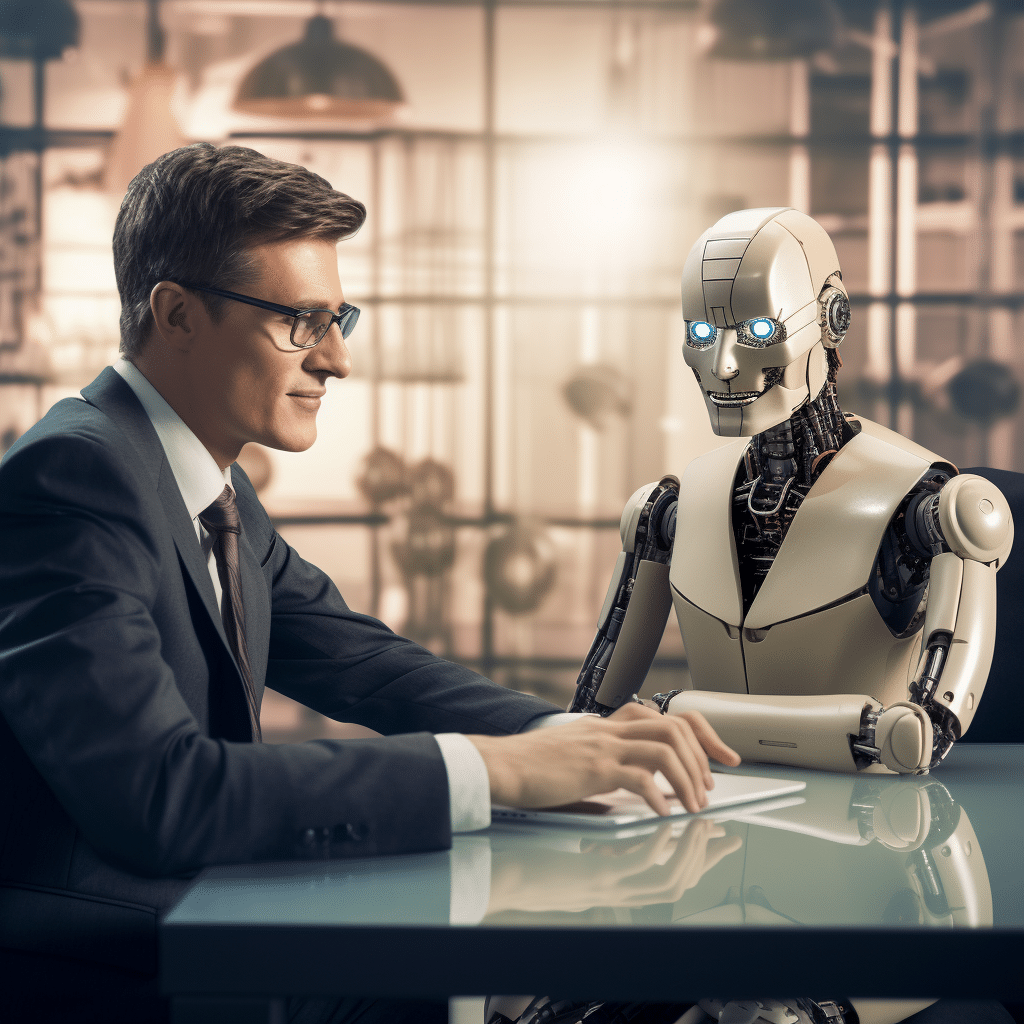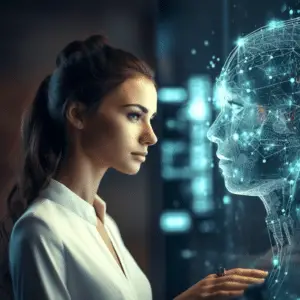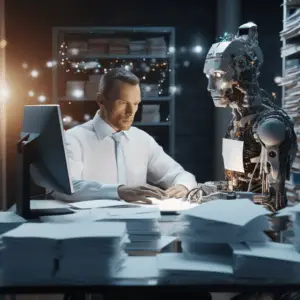
AI-Driven Recruitment: Transforming Hiring Processes
Streamlining Candidate Sourcing
AI algorithms have the ability to analyze job postings and match them with potential candidates effectively. By scanning and interpreting job descriptions, requirements, and candidate profiles, AI-powered systems can identify suitable candidates faster than human recruiters. This streamlines the sourcing process and allows recruiters to focus on other critical aspects of hiring.
Evaluating Applicants with AI-Powered Tools

AI enables the automation of the initial screening stage, saving recruiters valuable time. Through advanced natural language processing (NLP), AI can analyze resumes and cover letters, extracting relevant information and categorizing candidates based on their skills, experience, and qualifications. This assists recruiters in shortlisting candidates efficiently, ensuring only the most qualified individuals proceed to the next stages of the hiring process.
Eliminating Bias in Hiring
Traditional recruitment processes are susceptible to unconscious bias that might influence hiring decisions. However, AI helps eliminate bias by focusing solely on the candidate’s qualifications and skills. AI-driven systems can anonymize resumes, removing information such as names, gender, age, and educational background. This reduces the potential for discrimination and ensures a fair evaluation of candidates solely based on merit.
Enhancing Candidate Experience
AI-driven chatbots are increasingly being used to engage and communicate with candidates throughout the application process. These chatbots can answer frequently asked questions, provide updates on the hiring process, and even conduct initial interviews. By automating these interactions, candidates receive prompt responses, enhancing their overall experience while also reducing the workload on recruiters.
Improving Recruitment Predictions
AI algorithms can analyze vast amounts of data and identify patterns to predict successful hires. By analyzing factors such as historical data, candidate interactions, and performance metrics, AI can provide insights into which candidates are more likely to thrive in specific roles. This data-driven approach improves the accuracy of recruitment decisions, leading to better hires and reducing turnover rates.
Conclusion
AI-driven recruitment is transforming traditional hiring processes by streamlining candidate sourcing, evaluating applicants, eliminating bias, enhancing candidate experience, and improving recruitment predictions. Embracing AI in recruitment can save time, increase efficiency, and improve the overall quality of hires. As technology continues to advance, AI-driven recruitment is set to reshape the future of talent acquisition.
How can AI-powered solutions help employers identify the best-fit candidates for specific job roles during the hiring process
AI-powered solutions can help employers identify the best-fit candidates for specific job roles during the hiring process in several ways:
1. Resume screening:
AI can automatically assess and analyze resumes to identify relevant skills, experiences, and qualifications. It can quickly filter out candidates who don’t meet the requirements for a specific job role, saving time and effort.
2. Skill assessment:
AI can evaluate candidates’ skills and abilities using various methods such as online tests, coding challenges, or video interviews. It can objectively measure technical competencies, problem-solving skills, and domain knowledge to identify the most suitable candidates.
3. Predictive analytics:
AI algorithms can analyze vast amounts of data from candidate profiles, job descriptions, and historical hiring data to identify patterns and make predictions. By comparing the qualifications, experiences, and traits of successful employees in similar roles, AI can predict the likelihood of a candidate’s success in a specific job.
4. Natural Language Processing (NLP):
AI-powered chatbots and virtual assistants can interact with candidates during the hiring process. NLP enables these systems to understand and respond to candidates’ inquiries, providing them with relevant information about the job role, company, or application process.
5. Candidate ranking and matching:
AI can score and rank candidates based on their fit for a specific job role. It can compare candidate profiles against job requirements, considering various factors such as qualifications, experience, skills, and cultural fit. This helps employers prioritize candidates and identify the best match for the role.
6. Bias reduction:
AI can help reduce bias in the hiring process by focusing on objective criteria and removing human biases. It ensures fair and consistent evaluation of candidates, based on merit and qualifications rather than subjective judgments.
Overall, AI-powered solutions provide valuable insights and efficiency improvements during the hiring process, helping employers find the best-fit candidates for specific job roles while saving time and resources.
How does AI-driven recruitment technology improve the efficiency of hiring processes?
There are several ways in which AI-driven recruitment technology can improve the efficiency of hiring processes:
1. Automated resume screening: AI technology can analyze resumes and identify relevant information such as experience, skills, and qualifications. This helps recruiters to quickly filter through large volumes of resumes and identify suitable candidates.
2. Candidate matching: AI algorithms can match job requirements with candidate profiles, taking into account skills, experience, and qualifications. This helps recruiters to quickly identify the most qualified candidates for a position.
3. Enhanced candidate sourcing: AI-driven technology can scrape multiple online platforms and databases to find potential candidates who meet specific criteria. This saves time and effort in manual candidate sourcing.
4. Predictive analytics: AI can analyze historical data to identify patterns and trends in successful hires. This helps to predict the likelihood of a candidate’s success in a role, aiding recruiters in making informed hiring decisions.
5. Streamlined interview process: AI technology can automate scheduling and coordination of interviews, saving time and effort for recruiters. It can also conduct automated initial screening interviews, freeing up recruiters for more valuable tasks.
6. Reduced bias: AI-driven recruitment technology can help reduce human bias in the hiring process by focusing on objective criteria and qualifications rather than subjective factors. This promotes fairness and equal opportunity in hiring.
7. Improved candidate experience: AI can provide personalized, automated interactions and updates to candidates throughout the hiring process. This enhances the overall candidate experience and improves the employer brand.
Overall, AI-driven recruitment technology can significantly improve the efficiency of hiring processes by automating repetitive tasks, accelerating candidate screening and selection, and enhancing the overall candidate experience.
What are the potential benefits and challenges of implementing AI-driven recruitment in organizations?

AI-driven recruitment has the potential to revolutionize the hiring process in organizations. Here are some potential benefits and challenges of its implementation:
Benefits:
1. Increased efficiency: AI algorithms can quickly analyze and process large volumes of data, allowing organizations to handle a larger number of job applications and reduce the time and effort required for recruitment.
2. Improved accuracy: AI algorithms can eliminate human biases and make objective decisions based on relevant criteria and data, helping organizations to make more accurate and fair hiring decisions.
3. Enhanced candidate experience: AI-powered chatbots and virtual assistants can provide real-time feedback, answer queries, and engage with candidates throughout the recruitment process, providing a personalized and positive experience.
4. Cost savings: By automating repetitive tasks and streamlining the hiring process, organizations can reduce costs associated with recruitment, such as advertisement fees and manual screening processes.
5. Improved quality of hires: AI algorithms can analyze vast amounts of data to identify patterns and predict the success of candidates, helping organizations identify the most suitable candidates for the job.
Challenges:
1. Data bias: AI algorithms rely on historical data, which may contain biases stemming from human decisions and societal factors. This can lead to biased decision-making in recruitment, reinforcing existing inequalities and discrimination.
2. Lack of transparency: Some AI algorithms operate as “black boxes,” making it difficult to understand how they reach their decisions. This lack of transparency can raise concerns about fairness and accountability.
3. Ethical concerns: Implementing AI-driven recruitment raises ethical considerations such as privacy, consent, and data protection, as it involves collecting and analyzing sensitive personal information of candidates.
4. Loss of human touch: While AI can streamline the recruitment process, it may result in a loss of human interaction and personal touch, making candidates feel disconnected and unengaged.
5. Technical challenges: Implementing AI-driven recruitment requires technical expertise and infrastructure, which may be costly and time-consuming for some organizations. Additionally, maintaining and updating AI algorithms requires ongoing resources and expertise.
Organizations should carefully consider these potential benefits and challenges when implementing AI-driven recruitment, ensuring transparency, fairness, and compliance with legal and ethical standards. This will help harness the power of AI while mitigating potential risks and maximizing the advantages it can bring to the hiring process.









I don’t think the title of your article matches the content lol. Just kidding, mainly because I had some doubts after reading the article.
Thanks for sharing. I read many of your blog posts, cool, your blog is very good.